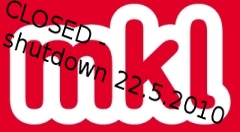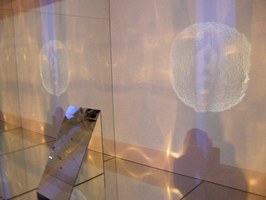When art meets science
Victoria Vesna in MedienKunstLabor
“If you look at some of the images of the atoms and molecules that they teach our kids in school, it all looks like this plastic, 3-D, rigid world, which it's not. It's all in flux and motion -- particles, waves. So I've really started questioning that. And I truly believe that this new science needs a new form of art to interrelate and to project and move people into a new way of thinking about the world we live in.” (Victoria Vesna)
In the past few decades, people have coped with big changes in several longstanding relationships – for instance, with time, space, information and individuality. We must contend with abrupt changes in scale, distance and pace, and our bodies and minds need to synthesize such abundance.
Victoria Vesna tries to put together some advanced scientific research with the observation of human limitations and habits, giving some reflections on the future role of art in society. As an artist she collaborates with scientists such as James Gimzewski and ventures into the field of experimental science, combining innovations from the chemistry, biology, physics with aesthetics and the
knowledge of the human condition to create outstanding experiential artifacts.
The show set up in MedienKunstLabor, the Quantum Tunnel is an example of art translations of disruptive scientific and technological innovations, a reflection on how the figure of the artist is changing from one who visualize and forms, to fundamental interpreter of an extreme dynamic reality. The audience activates and participates in the piece by physically reflecting in the multi-dimensional
reality of sounds and images from themselves and the immediate surroundings.
Nanoscale gives to the scientists an entirely new taste of the power and possibilities of the unobstructed world thanks to the computer that has done something similar for artists. But both artists and scientists are looking for way to describe extremely small and the extremely large in order to bring them to a human scale. After all, there is a limit beyond which “micro” is too small for a person’s eyes and mind and complexity becomes too overwhelming.
Quantum Tunnel abounds in fields of people’s desire to return to what is perceived as a human dimension. Using a bottom up methodology the installation try to visualize the invisible, but also to rework priorities, so that human beings always
come before any celebration of scientific progress. (Mirjana Peitler)



